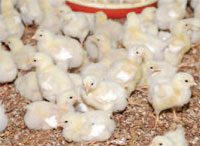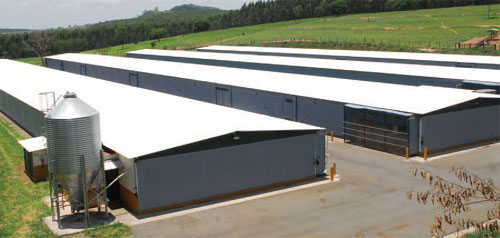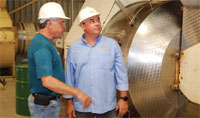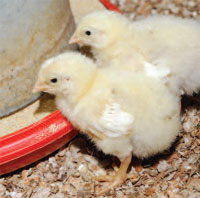



Straight-Run Flocks Bring Savings for São Paulo Company
Cobb 500 increases breeder production and reduces feed cost at A D’oro
An increasing number of Brazilian companies are considering an evaluation of the benefits of raising straight-run flocks on their farms. The main reasons are reduced management and overall production cost. Companies can determine that even with a number of changes including the feed, specific adjustments to the processing equipment and several other minor modifications, straight-run flocks provide the most economical way to manage and produce birds for processing final product for consumers.
Established in 1989, the A D’oro production units are located all over the state of São Paulo with the processing plant situated in Varzea Paulista. While the company’s main focus is on the domestic poultry market which ranks among the world's largest, they also export approximately 30 per cent of their production to markets in the Middle East, Japan, China, Hong Kong, Argentina and Venezuela.
* "Our flocks used to be 100 per cenr sexed, but our experience with straight-run flocks proved significantly more economic" |
A D’oro employs 1,800 people and produces approximately 400 tons of chicken meat daily from the eight million birds housed that are required to supply around 3000 registered customers. Chicken parts featuring breast, thigh, leg and thigh and wing options make up the majority of the volume along with a line aimed at the single customer - all form part of A D’oro’s product mix. The company specializes in the product ion of broilers up to 2.75 kilograms to produce mainly frozen chicken for cut-up products and for supplying export markets.
The large market share results in high investment costs in company facilities and production. That is why Marcelo Torreta, general manager for the São Carlos complex, suggested to the company’s directors that they should consider the idea of raising straight-run flocks and compare their performance, and in particular their cost, with currently sexed flocks. After approving the idea to investigate this option more fully, the company bought Cobb500 fast feather birds, the leading product used extensively in the US for its low cost of production and well suited for raising straight-run flocks. “Our main objective was to increase breeder productivity and reduce broiler feed cost. That was the promise of the Cobb line," says Torretta.

In May 2005, the general manager started the experiment to compare the performance of traditional, sexed flocks and that of the new Cobb fast feather straight-run flock. Of a total of 18 million birds produced from May to December of that year, almost four million were straight-run Cobb500 fast birds. “We evaluated and compared everything, including feed cost, mortality, quality of carcass, transportation and conditions at slaughter," explains Torretta.
The resul t s were encouraging. “The Cobb500 birds are fed with lower nutritional density feed and this less expensive feed provided excellent feed conversion," he says. Many advantages were recognized in the performance of Cobb500 fast flocks when compared to that of sexed flocks, but the advantage of lower quality feed was on its own significant. "The result was a saving of approximately R$130,000 a month, in feed alone," explains the manager.



This change carried out by A’doro, from sexed to straight-run flocks, also served to reduce feed loss and the management complexity associated with a larger number of feed types being used within product ion. The high productivity of the Cobb line in daily growth rate and less mortality was followed by improved carcass quality in the processing plant. Another aspect that must be highlighted was the freight cost. It was considerably lower with transporting increased volumes of the same feed and reduced feed left over in the houses when compared to the previous transportation costs associated with the sexed production feed program.
The experiment carried out by A D’oro proved that with Cobb500 fast, it is possible to make management processes easier and to obtain better financial results. "Our flocks used to be 100 per cent sexed, but our experience with straight-run flocks proved to be significantly more economic," says Marcelo Torreta.
In the processing plant, a few equipment and logistic changes were necessary, but when A D’oro assessed the overall impact on processing, the investment and changes brought benefits and profits to the final result for the company. “We were able to show the directors that it is economically feasible to change the production mode from sexed or slow feather production to fas t feather. From the t ime we demonstrated the advantage onward, we gradually changed flocks to fast feather", he states. "This improvement is vital to the company’s competitiveness for the future and enables us to grow and increase our market share," Marcelo Torreta concluded.








